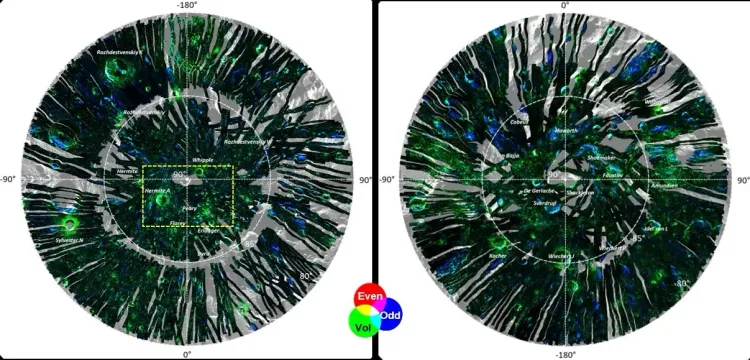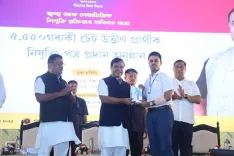Has ISRO Unlocked Advanced Lunar Data for Future Exploration?

Synopsis
Key Takeaways
- ISRO's advanced data products enhance lunar exploration.
- The data provides insights into the Moon's polar regions.
- Chandrayaan-2's DFSAR maps the Moon at a high resolution.
- The findings may reveal the presence of water-ice.
- ISRO continues to position India as a leader in space research.
New Delhi, Nov 8 (NationPress) The Indian Space Research Organisation (ISRO) has revealed on Saturday that it has obtained advanced data products from the Chandrayaan-2 orbiter, including novel parameters detailing the physical and dielectric characteristics of the Moon’s polar regions.
This milestone is seen as a crucial advancement for future explorations on a global scale. ISRO highlighted in a post on X that these new parameters signify India’s substantial contribution towards the future global investigation of the Moon.
Since entering lunar orbit in 2019, the Chandrayaan-2 Orbiter has successfully collected around 1,400 radar datasets along with high-fidelity data from its Dual Frequency Synthetic Aperture Radar (DFSAR).
This instrument is the inaugural one to conduct mapping of the Moon in L-band full-polarimetric mode at a resolution of 25 meters per pixel, as stated in an official release.
This sophisticated radar mode transmits and receives signals in both vertical and horizontal orientations, making it exceptionally suitable for analyzing surface characteristics.
Utilizing these datasets, researchers at the Space Applications Centre in Ahmedabad have produced advanced data products regarding the potential existence of water-ice, surface roughness, and critical electrical traits, particularly the dielectric constant, which indicates features like density and porosity of the Moon’s surface.
ISRO has developed the algorithm for analyzing the full-polarimetric data and generated these products indigenously.
The advanced data products offer first-order insights into the Moon’s polar regions, which are believed to have preserved the early chemical conditions of the solar system, providing clues for understanding various aspects of planetary evolution.
Furthermore, these products complement hyperspectral data, enhancing the study of mineral distribution on the Moon.
In addition, ISRO recently celebrated the successful launch of the CMS-03 satellite, the heaviest GEO communication satellite, aboard the LVM3-M5 rocket, known as the ‘Bahubali,’ successfully placing it into its designated orbit.









